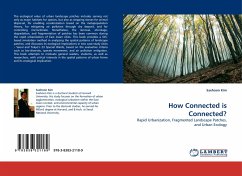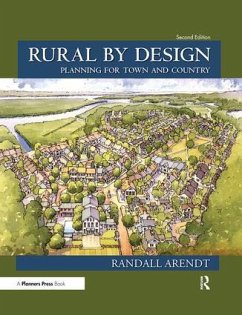
How Connected is Connected?
Rapid Urbanization, Fragmented Landscape Patches, and Urban Ecology
Versandkostenfrei!
Versandfertig in 6-10 Tagen
37,99 €
inkl. MwSt.

PAYBACK Punkte
19 °P sammeln!
The ecological value of urban landscape patches includes serving not only as major habitats for species, but also as stepping stones for animal dispersal, for enabling recolonization based on the metapopulation theory, for mitigating air pollution through dry deposit, and for controlling microclimate. Nonetheless, the removal, shrinkage, degradation, and fragmentation of patches has been common during the rapid urbanization of East Asian cities. This book provides a GIS-based simulation method in analyzing the spatial patterns of landscape patches, and discusses its ecological implications in ...
The ecological value of urban landscape patches includes serving not only as major habitats for species, but also as stepping stones for animal dispersal, for enabling recolonization based on the metapopulation theory, for mitigating air pollution through dry deposit, and for controlling microclimate. Nonetheless, the removal, shrinkage, degradation, and fragmentation of patches has been common during the rapid urbanization of East Asian cities. This book provides a GIS-based simulation method in analyzing the spatial patterns of landscape patches, and discusses its ecological implications in two case-study cities Seoul and Tokyo s 23 Special Wards, based on the evaluative criteria such as bio-diversity, species movement, and air pollution mitigation. This book attempts to motivate general readers, students, as well as researchers, with critical interests in the spatial patterns of urban forms and its ecological implication.












